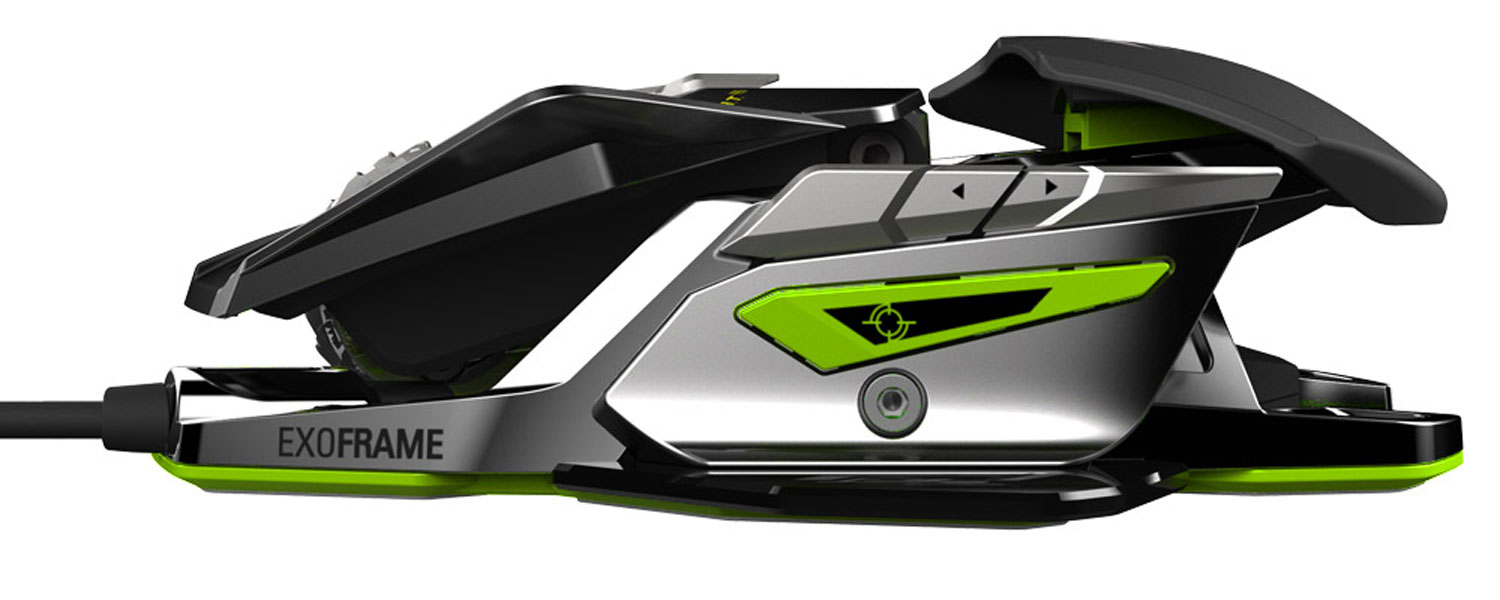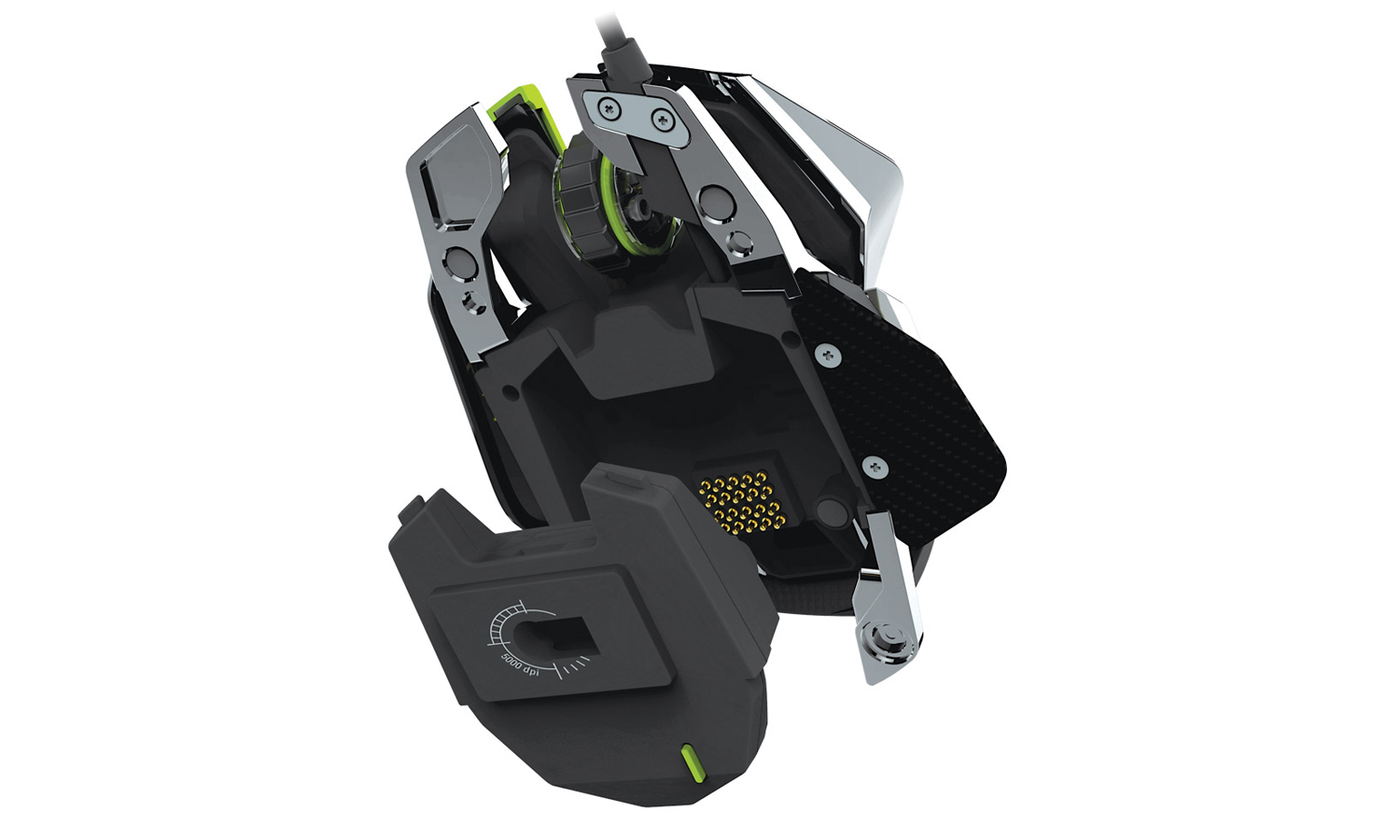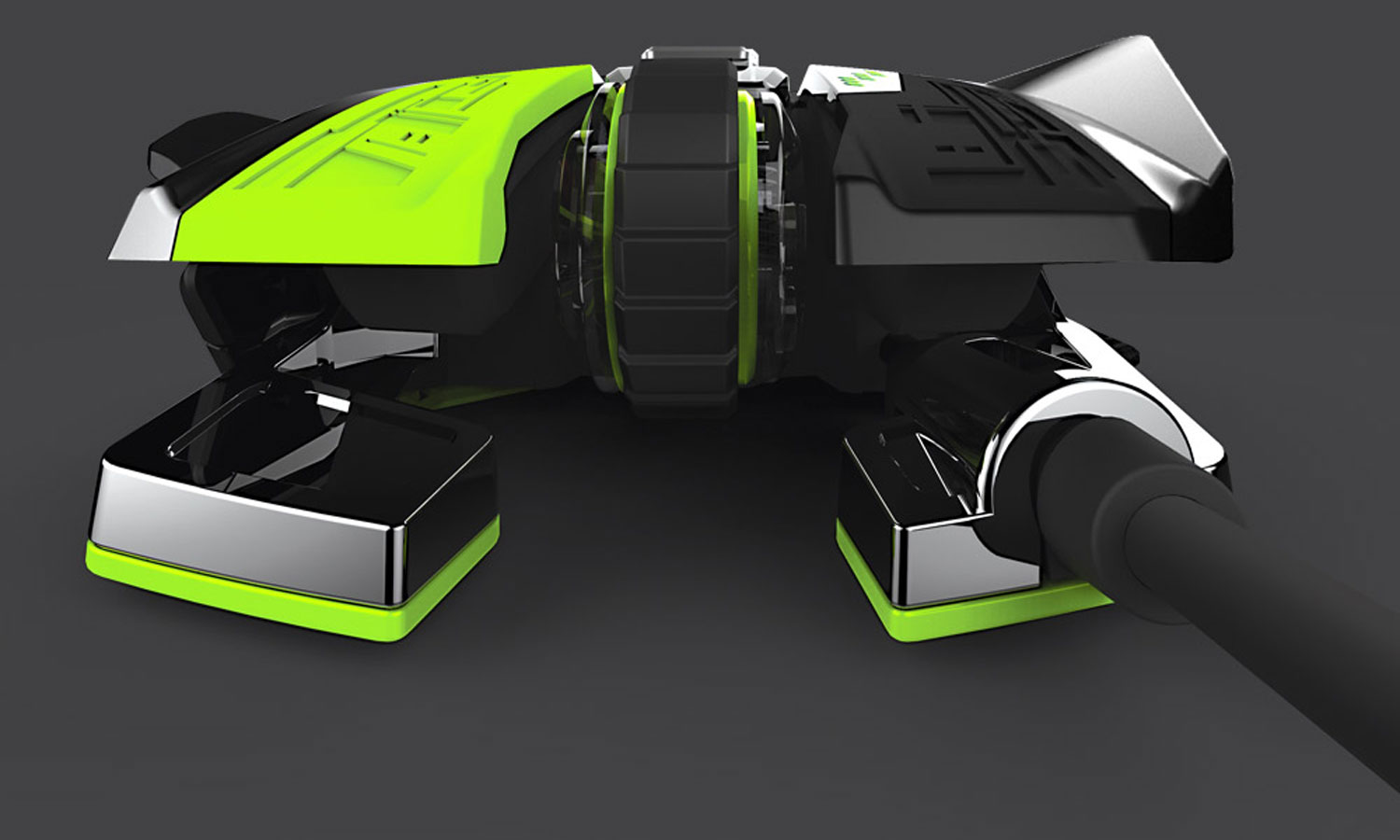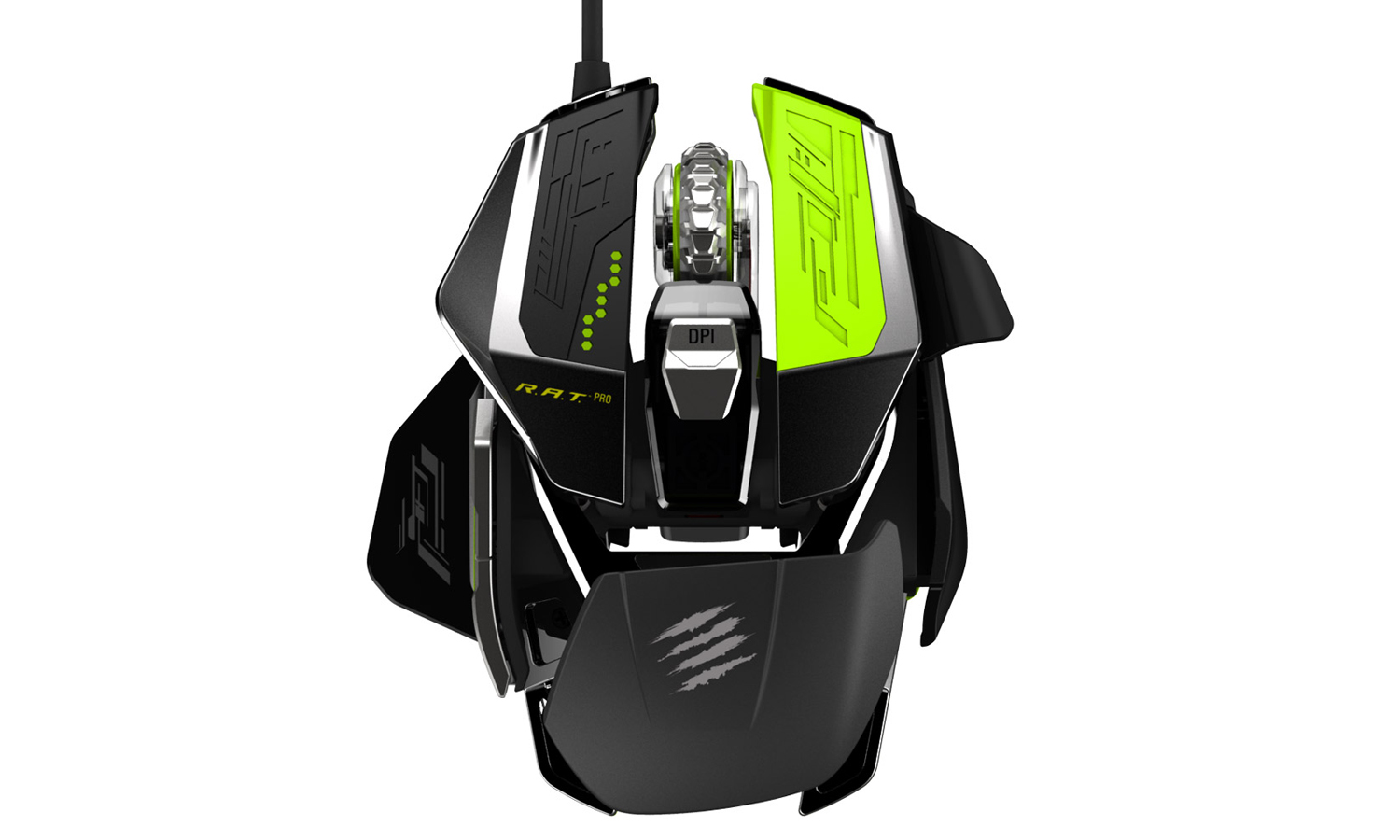Tom's Guide Verdict
The R.A.T. Pro X may not look pretty, but it's surprisingly comfortable, with incredible customization options.
Pros
- +
Easy, deep customization
- +
Comfortable feel
- +
Great in-game performance
Cons
- -
Expensive
- -
Few options for lefties or MMO players
Why you can trust Tom's Guide
Mad Catz has come a long way since its days of producing second-rate console controllers. The company has rebranded itself as something of a luxury provider, offering premium mobile accessories, a full-on Android console, and now, a flagship gaming mouse. The R.A.T. Pro X's $200 price tag isn't for the faint of heart, but if any mouse is really worth that cost, Mad Catz' new peripheral makes a convincing argument for itself.
The R.A.T Pro X may not look pretty, but it's surprisingly comfortable, with enough customization options to please even the most inveterate tinkerers. The mouse comes with a plethora of easily swappable extra parts, plus a sensible software package and great performance across a variety of genres. While the mouse could (and should) offer a few concessions to lefties and MMO gamers for the price, the R.A.T. Pro X is a nonetheless worthwhile choice for tournament-level gamers.
Design
First things first: The R.A.T. Pro X is not going to win any beauty contests. The mouse is designed with the idea that users will swap out parts, and as such, it doesn't really have a cohesive design. The whole thing looks industrial, full of silvers, blacks and (oddly) yellow-greens that make it look like someone forgot to put a cover on a half-finished mouse. At first glance, there is absolutely no reason to believe that the mouse will be comfortable.
MORE: Best Gaming Mice
And yet, the R.A.T. Pro X feels great once you wrap your hand around it. The mouse is highly customizable, so it's hard to pin down its exact dimensions, but it's generally a wide, flat device that lets your palm rest comfortably. Palm and claw grips both work fine, depending on your setup, and once I found my ideal configuration, my fingers never strayed from where they were supposed to be.

The mouse has only seven buttons, all told: a left button, a right button, a clickable scroll wheel, a dots-per-inch (DPI) sensitivity adjuster, two thumb buttons and a "sniper" button that lowers DPI, just below said thumb buttons. The layout feels sensible, but more options for button placement or number would have been nice.
Customizability
Of course, discussing the R.A.T. Pro X's overall design is impossible without talking about what makes it so unusual: its abundance of interchangeable parts. The device comes with two sets of feet (ceramic for control, and teflon for speed), three kinds of scroll wheels (two metal, one rubber), three palm rests (one plastic, one matte and one aerated), two thumb rests of varying width, and three finger rests (one neutral, one with a clasp for the pinky finger and one with a rest for the ring finger and pinky).
By default, the mouse comes with one sensor (our model came with a Philips PLN2037 laser sensor), but you can buy two additional sensors (Pixart ADNS 9800 laser or Pixart PMW3310 optical) and swap them out at will. You can change the position and height of the palm rest, or loosen or tighten the scroll wheel. The R.A.T. Pro X offers millions of permutations, and to its credit, many of them feel radically different.

What's strange, though, is that for all of its customizability, some aspects of the mouse are set in stone. You can't reprogram the left-click button, and you can't attach the thumb buttons to the right side of the mouse, making it useless for lefties, unlike the ambidextrous Razer Ouroboros. You're also stuck with two thumb buttons and one sniper button; there's no option to swap them out for more or fewer buttons as there is with the Roccat Nyth.
Assuming you're a righty who doesn't play too many MMOs, however, the customization options are quite staggering. You're almost guaranteed to find a conformation that you like, although you can easily expect to spend at least an hour playing with the peripheral until you do.
Features
Aside from the swappable parts, the R.A.T. Pro X's best feature is its software suite. It's one of the most attractive gaming peripheral programs I've ever worked with, and does its job admirably well. However, it lacks the polish of competitors like the Razer Synapse 2.0, the Logitech Gaming Software and the SteelSeries Engine 3.0.
The program is rather straightforward. You can link commands to any button except the right-click, create individual profiles, change the DPI settings, adjust the polling rate (how fast the mouse communicates with the computer) and link profiles with individual games. Every feature, however, comes with a caveat.
Programming commands is not as simple as selecting them from a list or typing in a keystroke; instead, you have to drag and drop from a pictographic menu, which feels a bit cumbersome. You can program only three DPI settings per profile, unlike the five or six that most mice allow.
The R.A.T. Pro X offers millions of permutations, and to its credit, many of them feel radically different.
Profiles, too, are fairly unintuitive. You can switch among 10 different profiles that are hard-wired into the device with a small button on the underside of the mouse. This lets you take the R.A.T. Pro X with you from computer to computer without having to install the software each time. Linking profiles to games, though, is a bit more difficult. Rather than linking, for example, one of the hard-wired profile to each program, each new linkage creates the opportunity to modify the ten profiles all over again. The system works, but it's a bit more abstruse than it needs to be.
The software works well, and is quite necessary to make the most of the R.A.T. Pro X's extra features. However, it could stand to be a little more user-friendly.
Performance
I tested the R.A.T. Pro X with Titanfall, StarCraft II: Heart of the Swarm, Batman: Arkham Knight and Star Trek Online in order to test how well it worked with various game genres. I have no complaints about how it performed.

I found that the mouse handled each game responsively, and no single genre stood out above the rest. In Titanfall, I was able to aim with ease, and the sniper button helped me slow down to lock onto enemies with a smart pistol. Upping the DPI to quickly switch between my home base and the frontlines in Heart of the Swarm was likewise very simple, as was leading the Dark Knight through a Scarecrow stronghold.
MORE: Best Gaming Keyboards
Star Trek Online handled well, too, but I would urge hardcore MMO players to think twice about the mouse. There are two thumb buttons — or three if you repurpose the sniper mode. Other mice, like the Razer Naga and the Roccat Nyth, are much better suited to MMO buffs who want an entire row of skills at their fingertips.
Bottom Line
The R.A.T. Pro X wants to be a premium mouse for a hardcore audience, and in that, it succeeds on almost all counts. Weird appearance aside, it's a comfortable product with simple customization options and utility across a wide variety of genres.

Whether it's really worth $200, though, is a fair question. Most players could probably go with a one-size-fits-all mouse like the Razer DeathAdder or the Logitech G502 Proteus Core and not miss out on much. For the price, the mouse should also arguably have some features for left-handed players, as well as software that works perfectly, instead of pretty well.
If precision is your thing, and run-of-the-mill gaming mice just won't cut it for your level of play, definitely give the R.A.T. Pro X a look. You're not likely to find another peripheral that gives you so many options and requires so little mechanical know-how in return.
Marshall Honorof is a senior editor for Tom's Guide, overseeing the site's coverage of gaming hardware and software. He comes from a science writing background, having studied paleomammalogy, biological anthropology, and the history of science and technology. After hours, you can find him practicing taekwondo or doing deep dives on classic sci-fi.
-
Bor_G Pro X has a wow factor to it. It looks stunning or at least interesting, if you are not a Transformers fan. Build is of a superior quality. I play LoL, so I opted for optical PixArt® PMW3310 sensor. It is precise and I feel very much in control. Simply put, I never owned anything close to it. There are however a few important downsides. First, despite all customizations mouse does not fit my large hands as Rat 9 does. Thumb buttons are of a lesser quality. Those buttons feel plastic, cheap and the presses are unreliable as there is no click feeling to it. Moreover, as the mouse is so light and the friction so diminished, when you press one of those buttons you tend to move the whole mouse because of how light it is. That is a very undesirable effect in the game. I recommend you test it before you buy it.Reply

